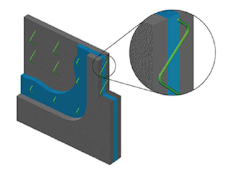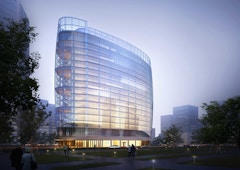
Reconfigurable Terracotta Facade
The traditional building facade as a permanent construction does not actively respond to the differing needs from varying weather conditions.

The traditional building facade as a permanent construction does not actively respond to the differing needs from varying weather conditions.

Buildings have a considerable impact on the environment, and it is crucial to consider environmental and energy performance in building design.

Developments in performative computational analysis, mass customization, and complex form manipulation revolutionized building envelope design

In 2014, the American National Standards Institute (ANSI) approved the Precast/Prestressed Concrete Institute (PCI) as an accredited ANSI Standards

The largest source of air pollution in North America is the atmospheric boundary layer of a city caused by its urban canyons with pollutants produced


Complex freeform architectural enclosures are becoming increasingly popular and easy to model and design with the help of modern computational tools.




The state-of-the-art of Additive Manufacturing (AM), popularly known as 3D printing, shows its prospective future in the


Computer simulations of an automated dynamic facade in a passively heated and cooled building by using predictive modeling of short-term future

An assessment workflow was created to simulate and evaluate the performance of a kinetic facade in an interior space. It includes parameters of

The paper will try to study the impact of window opening on waiting room experience of patients in an eye hospital along with their attendants. As

The envelope of the Harbin Bank Building in Beijing has a Multi-Skin Facade where the outer cavity is naturally ventilated. During the design the


Quickly exceeding new facade service life expectations for tall buildings imposed by increasing environmental, economic, and social pressures have

